The beauty of narrative adventure games relies on the promise of choice. In comparison to other genres, graphics and gameplay can sometimes take a backseat to the stories that drive them forward. What matters most is that the player’s engagement is fueled by the idea that they can drastically influence the outcome of the story that’s being told. Over the last decade, that idea—that the player even has free will and a sense to control the narrative—has grown in popularity across platforms.
Of course, on the surface, the very concept of a player’s choice seems, by necessity, illusory. A player only has a finite amount of decision-making capabilities and branching narratives to follow within the confines of the story that’s been developed for them.
Take Life Is Strange. When Dontnod Entertainment debuted its episodic first season in 2015, it featured Max Caulfield, an 18-year-old photography student who discovers she has the latent ability to rewind time. As Max, the player uses that superpower to save Chloe Price, her childhood friend, from a near-death experience. Each and every decision you make from there carries a sense of urgency, but instead of leading toward a multitude of endings, they only hurtle you toward one brilliant, albeit damning, conclusion.

Credit: Square Enix
By messing with the fabric of time, you’ve inadvertently created a storm that threatens to destroy the town. Here chaos theory and the butterfly effect reign supreme—the smallest decisions can have far reaching consequences on the world around you. So you’ve got to make one final, irreversible decision: Travel back in time and let Chloe die the way she was originally intended so you can stop the storm from ever being created and save the town from destruction, or keep Chloe alive and let the town, and everyone in it, perish in a typhoon’s path.
Those choices you make along the way—from saving a friend from suicide, unearthing the truth behind a student’s disappearance and numerous attempts to keep Chloe alive—don’t matter, at least not in terms of affecting the main narrative arc.
“There is no good or bad ending in Life Is Strange; it only depends on the player’s choices [leading up to that point],” said co-creator and lead writer Jean-Luc Cano. “We wanted to shape that final choice by giving the player all the other choices.”
In a similar sleight of hand, Until Dawn, a cinematic horror game developed by Supermassive Games, allows you to assume control of eight young adults across 10 chapters with the understanding that any one or all of them could die at any time. Although the risk is seemingly ever-present with a total of 38 unique death scenes, three of the seven characters—including Sam, played by everyone’s favorite heroic cheerleader Hayden Panettiere—are kept alive until the final chapter regardless of how many quick time events you fail or terrible decisions you make along the way.
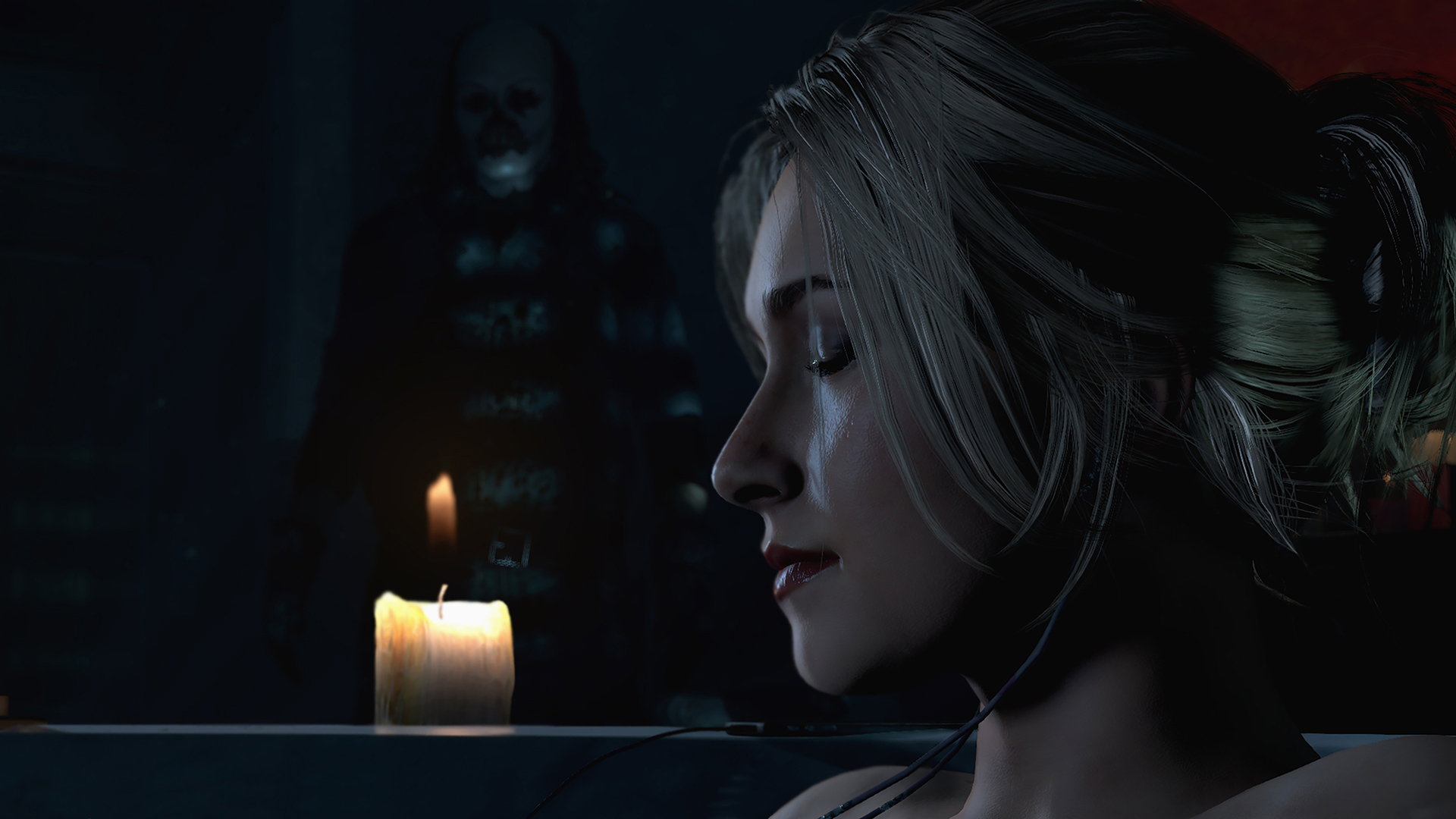
Credit: Sony
Although vastly different in terms of genre, the successes of these games—including their spiritual successors Life Is Strange 2 and Man of Medan—isn’t entirely dependent on the outcome. Instead, they succeed thanks to the interplay between player expectation, independent exploration and solid narrative design.
“It’s important to let the player make some moral choices and it’s also important to make him believe the story and make him experience the story he wants to experience,” Cano said. “It’s a real balance between letting the player make their choices and shaping the game around these choices but also having the story we want to tell.”
The story of Life Is Strange 2 follows 16-year-old Sean Diaz and his 9-year-old brother Daniel who are forced to run when a horrific accident results in the death of a police officer and their father. Unlike its predecessor, Life is Strange 2’s superpower is kept entirely out of the player’s hands and reserved for the non-playable Daniel instead, making for an interesting dynamic that plays out in surprising ways (more on that later).
Cano worked with co-writer Christian Devine and directors Michel Koch and Raoul Barbet to devise this concept and decided early on that a great West Coast road trip narrative would best suit the story they were trying to tell. Once the bare bones of the overarching narrative were in place, Cano wrote a linear script from beginning to end. That script was then split into five episodes. Each episode was structured to include four or five main sequences the player must navigate through in order to finish each episode.
Cano pointed to what he calls “the critical way” as the foundation for the story’s main sequences—it’s the framework through which each and every player must progress, moving through the same crucial plot points that the story hinges upon in order to tell a complete narrative. Crucial moments like the death of Sean and Daniel’s father, or the decision to hide out at their grandparents’ house in episode two are kept out of the player’s hands because these key plot points keep the narrative moving and provide a compelling story.
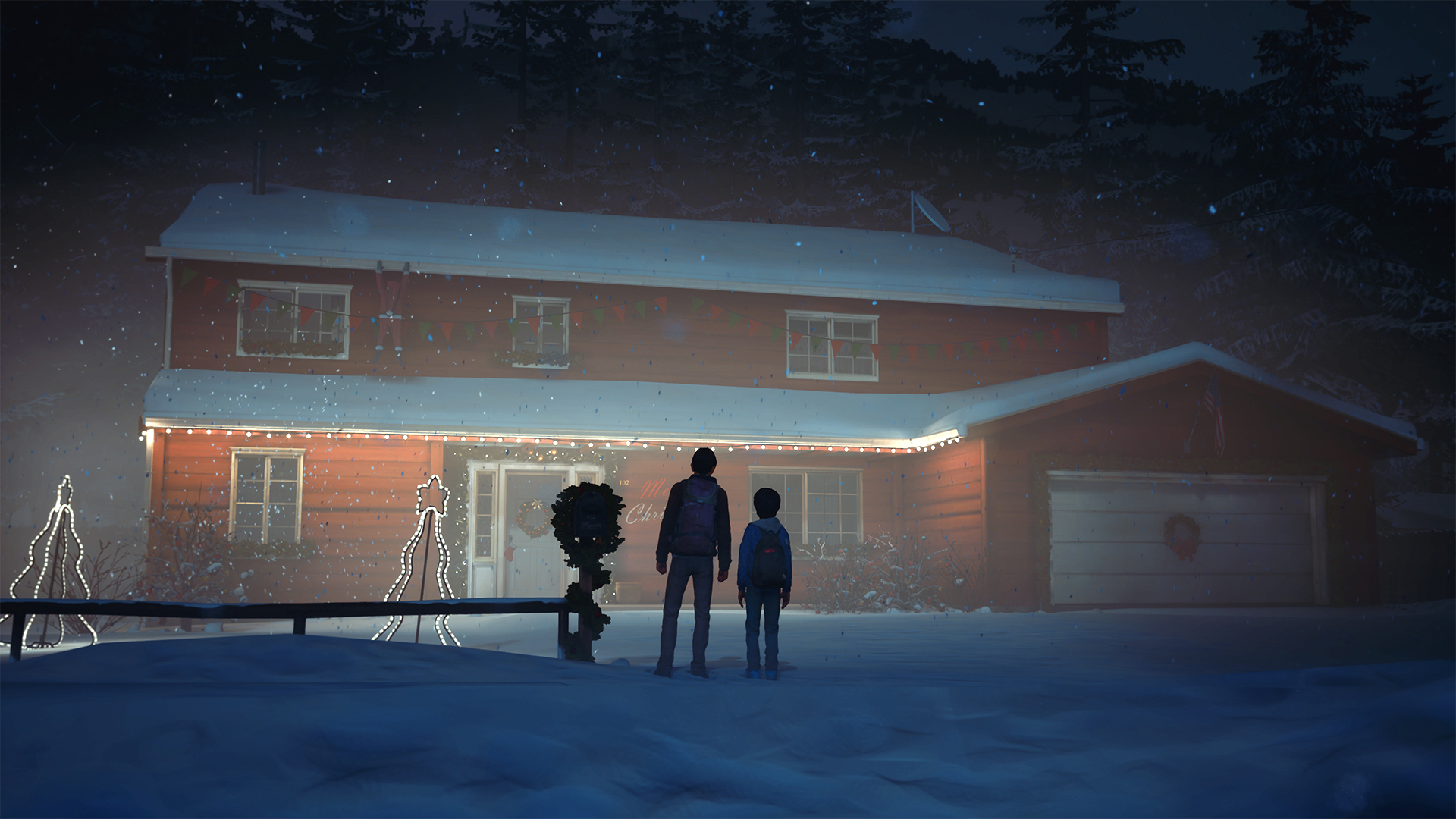
Credit: Square Enix
“We start with the main story and we dig into the story, into the smallest parts like the dialogue, and add a lot of choices at every step of the creation,” Cano said. “As we work on every episode, we add more and more decisions and more and more choices to make every experience different from another.”
Each of these smaller decisions strengthen in-game character relationships and require a player’s complicity in establishing a hefty narrative that make these games both effective and enjoyable.
When the Diaz brothers arrive at their grandparents’ house in episode two, for instance, they’re given strict orders not to use the phone or the computer to protect their location. They’re viewed as potential suspects in the accident that killed their father, and therefore need to lay low. Of course, you’re given the opportunity to break those rules once the grandparents leave the house. You can log into your social media accounts on the laptop and see what people are saying about you, and you can check in on your best friend, Lyla, by picking up the phone. You can also do none of these things, too, but Cano tells me no matter what you decide to do or don’t do, the end result is the same: The cops show up in the final moments, forcing the Diaz brothers to run again.
“If you call Lyla, if you use the internet, it will not change the ending,” Cano said. “It will change the feelings you have of the ending.”
In my playthrough, hearing Lyla’s voice on the other end of the line brought me an immediate sense of relief. When I was forced to say goodbye to her at the end of episode one, I never thought I’d hear from her again. The moment, though brief, was a welcome one that grounded Sean’s character. But when the cops showed up later in the episode—putting both of Sean’s grandparents at risk as well as Daniel—I was overwhelmed with an immediate sense of guilt. I felt like I was directly responsible for what happened. Although those decisions were illusory in a technical sense, the delivery was effective because of the relationships I invested in over the course of the game.
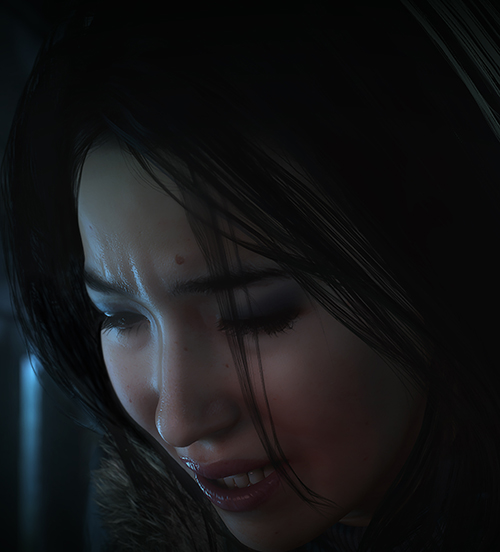
Credit: Sony
Creating believable relationships is also at the center of what works in Until Dawn. On my first playthrough, I set out to save everyone except Emily. Although highly intelligent and witty, I found her character at times problematic and far too explosive to the other characters I was supposed to care about. An early scene suggests she’s also untrustworthy, hinting at the possibility that she may be cheating on her current boyfriend, Matt.
Midway through the game, Emily ends up in real danger while trying to contact a dispatcher from the top of a radio tower with Matt’s help. A Wendigo cuts the cable ties, sending the whole thing tumbling down, and you’re forced to switch perspectives by taking control of Matt as Emily hangs on for dear life. I remembered her dishonesty from earlier in the game and had no intention of saving her. Instead, I questioned her loyalty twice and then let her fall to what I thought was her death. I didn’t feel good about it ethically, but it felt great to have the upper hand.
I was disappointed when I regained control of Emily in an abandoned mineshaft far underground. But my attitude toward her quickly changed when she discovered crucial information tied to the disappearance of two characters from the game’s prologue and the origin of the monsters threatening to kill everyone off. As the creatures chase Emily through the mines, you’re faced with a series of decisions and QTEs that could result in her very real death. It was in that moment that my distaste for her character evolved and I wanted her to live, because it felt like the success of the overall group’s survival was dependent on her making it out alive. She needed to deliver the information she discovered.
Maintaining consistency and believability in all of the characters all the time provides players with the motivation to see the narrative through to its conclusion. According to Pete Samuels, series director and executive producer of The Dark Pictures Anthology (of which Man of Medan is the first entry), that same consistency and believability is one of the biggest challenges choice-driven narrative games face.
“We don’t have control over the choices that a player makes, and one may be emotionally inconsistent with the last,” Samuels said. “That’s a tough one to manage without characters appearing psychotic.”
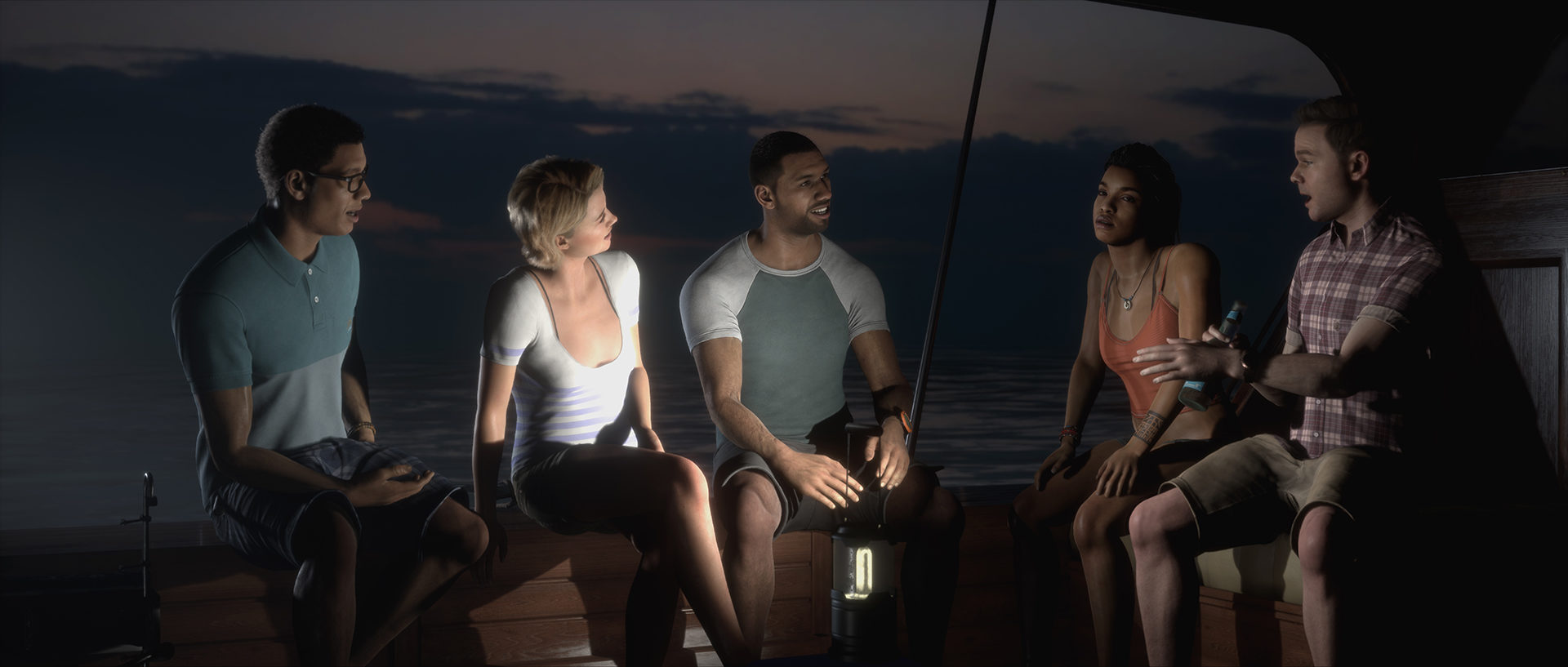
Credit: Bandai Namco
By shooting performances two or more times with different emotional emphasis, recording walk animations, idle animations and facial animations for a number of emotional states, and limiting choices and dialogue to only those moments that would be appropriate for the situation the character is in, designers try to provide enough material that resonates regardless of play style.
“Regarding the situations that different players find their characters in, we like to think that each player gets the story that they deserve,” Samuels said.
To create a Dark Pictures game—of which there are at least five currently in various stages of development—a team of game designers, narrative designers and storyboard artists led by a game director spend six months designing and revising the final script by identifying strengths and weaknesses of the narrative through a playable storyboard format. Samuels said this process was a big improvement from when they developed Until Dawn, and it’s been made stronger by a strict set of narrative rules “of which there are a lot.” Two of the biggest rules they follow: never lie to the player, and never have consequences that are unfair.
“In many cases, Until Dawn punished the player very deliberately for doing a ‘dishonorable’ thing,” Samuels said.
Figuring out, for instance, that nature plays a significant role in Until Dawn’s narrative and using that knowledge to inform your decision not to attack a herd of deer while standing on a cliff ensures your chance of survival.
“Man of Medan is different,” warned Samuels. “It’s more difficult to figure out which choice to make in order to get the outcomes that you want, but all of the information is there, somewhere, if you look for it.”
With play time clocking in at roughly 4-and-a-half hours—half that of Until Dawn—and five playable characters, it was important to increase the frequency with which characters could die. When Man of Medan debuts on PC, PS4 and Xbox One August 30th, it will have a total of 69 unique deaths.
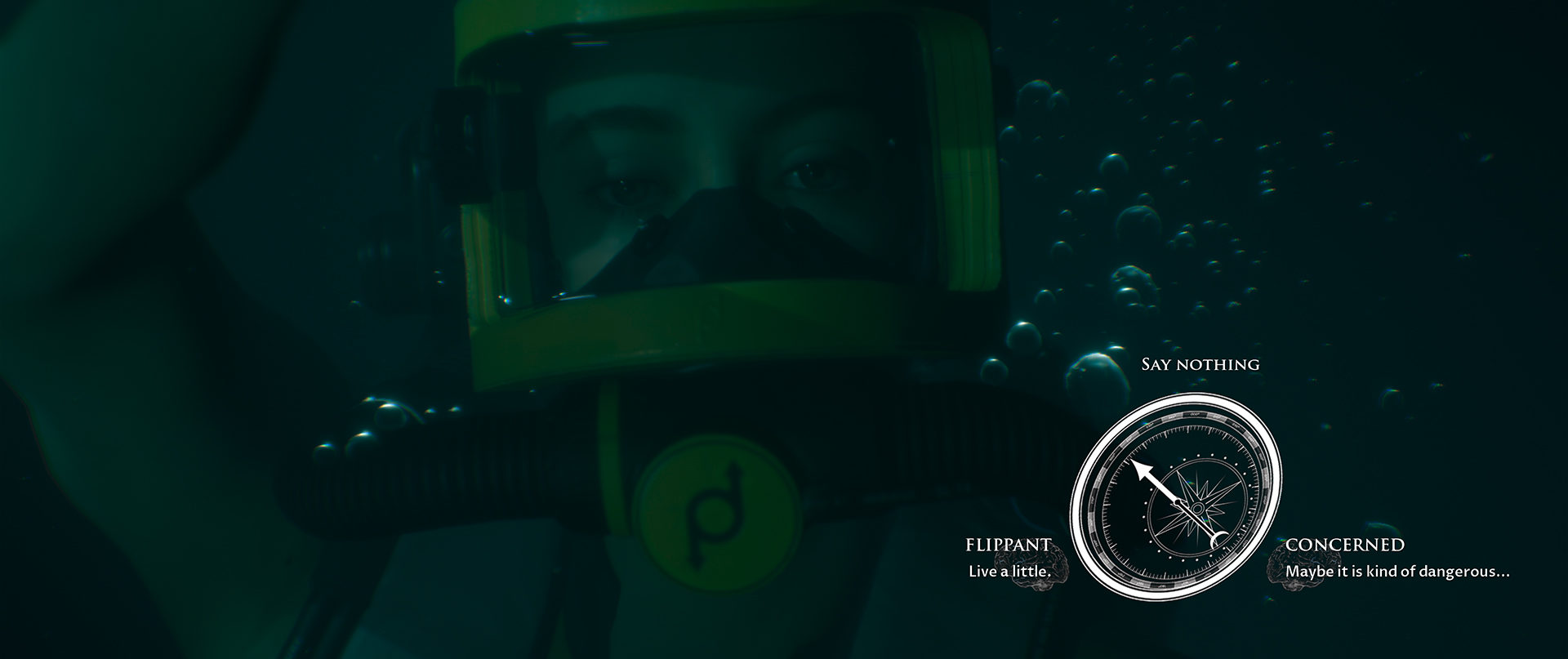
Credit: Bandai Namco
“I’m sure that there were a few choices in Until Dawn that had little bearing on the story, but even five years ago we worked hard to keep these to a minimum,” Samuels said. “Every choice you make in Man of Medan will, at the very least, change the probability that a future event will happen.”
As in its predecessor, players are encouraged to explore character connectivity from the outset through a much more developed drop-down menu that conveys the various strengths and weaknesses that tie your playable character to the rest of the characters in your group. From there, players can see the current health of the relationships between characters and the specific conversations and events that led to the formation of those relationships.
“What the relationship-building gives the player is the opportunity for regular and meaningful interaction—lots of choices that, in their own right, change very little but cumulatively have a huge effect on their experience,” Samuels said. “We try to have our games mirror life, apart from ghosts and monsters and the brutal deaths, obviously.”
In Man of Medan, developers increased the complexity of this system by tracking many more of the character actions determined by the player and using those actions to shape the character’s behavior and the behavior of all those around them including NPCs.
“The additional feature that we’ve incorporated allows the player to dig into the things that they’ve done that have affected relationships and whether specific actions affected specific relationships positively or negatively,” Samuels said. “Every feature that we incorporate to enable the player to link their decisions with the narrative consequences has the primary goal of communicating that every choice matters and nothing is trivial.”
That’s especially so in Life Is Strange 2, when you’re charged with educating a younger sibling who possesses destructive otherworldly telekinetic abilities. Cano said every decision in Life Is Strange 2 functions on two separate levels—that of morality and brotherhood. Although the two can go hand-in-hand, they are quite often in opposition of each other, creating complex decisions for the player to navigate and work through.
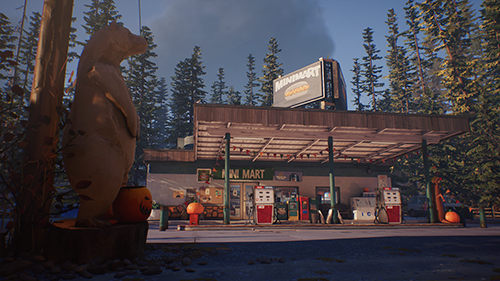
Credit: Bandai Namco
For instance, while on the road in episode one, Sean discovers a Choc-O-Crisp bar inside of an unlocked car in a gas station parking lot. At this point in the game, the sun is setting, the brothers are low on money, and both of them are starving. There’s a variety of options at your disposal—from begging a family for food or having your brother beg, spending money in the gas station or attempting to steal, and the most obvious choice: taking that Choc-O-Crisp and running for the hills. If you steal the Choc-O-Crisp, you’ll increase your brotherhood bond because you have to keep each other alive at all costs and Daniel will be grateful you helped him. But, at the same time, you’ll decrease your morality because Daniel will see you stealing that food and think it’s okay for him to steal down the line.
In episode two, there’s a far more difficult decision when Daniel discovers a mountain lion has killed his newfound dog (RIP Mushroom). Daniel, enraged and saddened by his sudden loss, grips the mountain lion by the neck with his telekinetic powers. Playing as his older brother, Sean, you have the ability to direct Daniel and influence him to kill the mountain lion or let it go.
“For us, it’s like a trigger to say to Daniel, ‘You can use your power for good or bad,’” Cano said.
In fact, Cano hinted that this decision directly impacts a later one made by Daniel during episode two’s final cinematic scene, in which he has the opportunity to use his power (or not use his power) to save another 9-year-old boy from being hit by a car. This decision is specifically kept out of the player’s hand but directly influenced by your previous decisions, making this moment even more gut-wrenching. If Daniel doesn’t use his powers and his friend is injured, you can’t help but wonder yet again if you’ve made irreversible mistakes. That kind of guilt sticks with you.
“You give him the morality you want him to have, so it’s really up to the player to shape Daniel with his own morality,” Cano said.
In episode three, while camping in the woods with a close-knit community of drifters, Sean has to choose between going to bed with Daniel or sending him off on his own and staying up to socialize. Before that moment, though, we’re given a cinematic scene in which Daniel flexes his power to lift an enormous tree trunk out of a lake with little effort in response to Sean telling him he needs to grow up and stop acting like a child.
“I’m not a kid anymore,” he says with a threatening tone, a tiny Brightburn in the making.
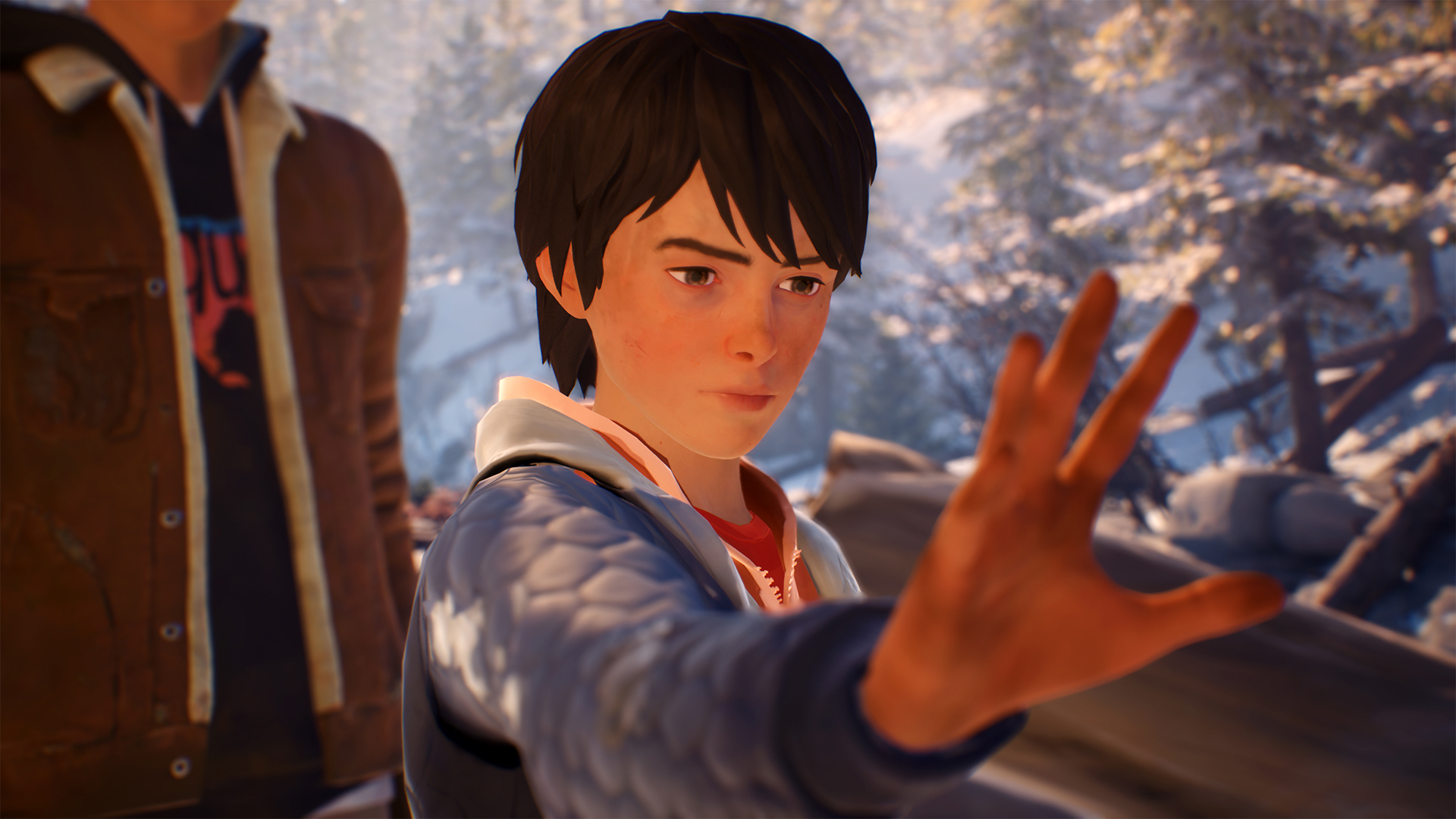
Credit: Square Enix
That scene influenced my decision to make Daniel go to bed alone. Although I recognized it was a missed opportunity to strengthen Sean’s connection with Daniel, he earned his independence. It also gave Sean the opportunity to strengthen his connection with his friends around the campfire, including Cassidy and Finn, both of whom you can romance further into the episode.
In my playthrough, Sean put Cassidy in the friend zone for a shot at Finn. I instantly regretted that decision when Finn tried to coerce Sean to use his younger brother as part of a dangerous plan. He wanted Daniel to use his powers to break into an aggressive cannabis plantation owner’s home and steal an exorbitant amount of money from a safe sight unseen.
It sounds dramatic, and it certainly is, but it makes sense in the narrative. They’re all working for the plantation owner just to get by, and when Daniel is caught snooping in his office earlier in the episode, the owner decides not to pay them for their day’s work. Finn wanted a just reward, I understood that, but it would come at a dire cost and I wasn’t willing to put Daniel in harm’s way to get that done.
Still, the game later forced my hand by revealing that Daniel joined Finn of his own free will to carry out the heist. By the time I caught up with them, they were already in the house, ready to make their way through one final door. Sean makes a case for calling it quits and leaving before it’s too late, but Daniel counters.
“I want to help, Sean,” he says, pleading. “We can get out of here. Go to Mexico.”
Having the money meant we wouldn’t have to worry. Plus, Mexico has always been the endgame. It’s where their father was from. As I debated the decision—to go along with the plan or try to stop it from happening—I remembered that scene earlier when Daniel lifted that tree trunk out of the lake with a foreboding warning. Suddenly, I was afraid to say no. I was afraid what might happen if I angered Daniel. My hands were tied.
“You can’t give him too much freedom because he’s going to make bad choices, but you have to let something go and you have to trust in his decisions,” Cano said. “That will be the dilemma of Sean, maybe, in the next episode.”
Of course the brothers get caught and the plan goes awry, but as it all unfolded out of my control in a cinematic scene that has Daniel using his explosive powers and leaving Sean gravely wounded, I realized this confrontation was part of Cano’s “critical way.” We were always heading down this route, doomed from the start.
Knowing that doesn’t make me feel any better and maybe that’s the point. When episode four debuts on PC, PS4, and Xbox One on August 22nd, I’m still going to be worried about Daniel’s safety and I’m still going to be questioning whether I’ve been making the right decisions. I don’t feel like I’ve been doing a good enough job to keep Daniel safe and out of harm’s way—and that’s how I know the narrative is working. All of the decisions I’ve made thus far—the ones I actively chose, the ones I fought hard to make, and the choices kept out of my control—have all led me to a place of self-discovery.
“What matters the most is when a player finishes one of our games, he knows himself better than at the beginning,” said Cano.
Header image: Life Is Strange, Square Enix

James Bigley II won the City and Regional Magazine National Writer of the Year Award in 2018 and his work, largely focused on human interest stories, has been published in Cleveland Magazine. He’s been in pursuit of the Triforce of Courage for more than 20 years. You can find him on Twitter @Jc_bigz.





